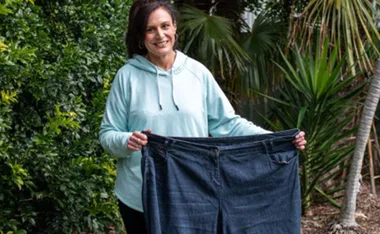When searching for a trendy diet that actually works, look no further than the inside of your pantry…
We’ve all been there one time or another. You read that kale is the next best thing since sliced bread from a health website, so you spend 20 minutes each morning sautéing leafy greens instead of packing lunches. Some magazine with a girl in a bikini on the cover tells you that juice cleansing will change your life, so the next morning you stand with your nose pinched, drinking a green sludge called ‘Gracious Green Goddess’. A friend comes barging into your house brandishing a paleo diet book, and the next two weeks of your life are spent drinking something called ‘bone broth’ and staring at doughnuts longingly.
But trendy diets come and go, and kale and quinoa and the Gracious Green Goddess are usually abandoned for something with a little more sanity – and gluten.
And after cycling through the endless trendy diets that seem to crop up month after month, most working adults are still looking for a healthy, inexpensive and quick breakfast option that can providecomparable health benefits of a kale or a quinoa, without tasting like either.
Fortunately, the answer has already been worked out for you, and it’s been sitting in your pantry the whole time.
A bowl of whole grain cereal with milk or yoghurt might not be trendy, but it contains a great combination of fibre, protein and calcium and it comes with the added bonus of not tasting like bone broth.
But this information is not new.
High fibre breakfast options, like cereals, mueslis, oat porridge and fruits, have been linked to reduced disease risk, a healthy weight and improved bowel function. It is recommended to have about 30g of fibre everyday from various sources. Having a high fibre breakfast helps to make sure you are well on the way to meeting those requirements.
On top of that, breakfasts filled with fibre, because of their slower digestion times, tend to make you feel full. Studies done on high fibre diets suggest it might be great for controlling portions as the fibre makes the meal bulky and may reduce the amount of calories you eat. So, unlike juice cleanses, you can still eat regular meals while you lose weight.
Additionally, we know that many Australians struggle to get enough calcium in their diets. Adding milk to oats and cereals in the morning is another added benefit, as it can help to raise calcium intakes which promote strong bones and teeth, and protein intakes which help with satiety. Paired with the perks of high fibre, the combination of cereal and milk is one of the most sensible breakfast choices out there.
So, the next time you find yourself wanting to switch up your breakfast habits for a diet trend that actually works – try a bowl of whole grain cereal with milk or yoghurt, topped with some fresh fruit.
And try not to gloat.
For more information visit Kellogg’s 30 Days of Goodness










